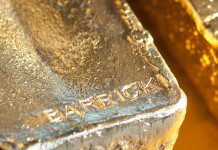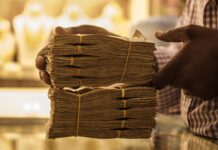
[miningmx.com] — DRDGOLD, once the darling of gold fanatics everywhere, said it hoped to rekindle US interest in the stock with the possibility technology could double gold output from its surface retreatment operations.
Said Niel Pretorius, CEO of DRDGold: “If we can find the technological breakthrough we need to improve [recoveries from its surface retreatment operations] then we’ll be able to almost double our production,’ said Pretorius.
Pretorius was speaking at DRDGold’s second quarter results presentation in which he also suggested that the company’s stand off with the South African government over financial responsibility for acid mine water could be resolved.
DRDGold posted an impressive improvement in quarter-on-quarter headline earnings reporting 23.9c/share up from 0.4c/share previously.
DRDGold operates the Blyvoor mine, the Crown and Ergo retreatment and metallurgical facilities, and the ERPM surface retreatment facility.
A portion of the earnings gain in the quarter was a result of “de-risking’ the company, said Pretorius. This was after DRDGold sold the mining licences to the old Durban Roodepoort Deep and West Wits leases and then adding back the firm’s environmental provisioning, equal to income of R110.9m.
There were also foreign exchange gains after the company repatriated funds after having closed offshore business units.
Commenting on attracting new gold price optionality into the share – shed by the company after a process of closing or selling its marginal underground mines – Pretorius said technological optionality would replace gold price optionality.
In essence, the company was seeking to discover technology that could help it improve on the current surface recovery ratio of between 0.18kg to 0.2kg per tonne to at least 2kg per tonne, enough to more than double production from its Crown and Ergo circuits.
“It might happen this year or in the next five years, no one knows, but if it doesn’t happen then we’ll just stick to our 30% margin,’ said Pretorius.
Of the company’s strategy to derisk itself, Pretorius said: “The team at DRD has dedicated itself towards the reduction of risk, transferring risk and tying up loose ends so that we don’t just carry debt on our books,’ said Pretorius.
“It is not a coincidence that we are debt free,’ he added.
Underground matters
Production at Blyvoor, DRDGold’s extant underground mining operation, was down by 7% to 830kg while surface production dropped by 23% attributed to higher electricity tariffs by state-owned power utility Eskom.
Pretorius said the company had done well to retrieve Blyvoor from liquidation last year and that it’s continued recovery would be monitored. The underground section of the mine is unprofitable without income derived from its surface section.
Pretorius said he was confident the acid mine drainage issue for which the company was at loggerheads with the government would be resolved.
Government believes that DRDGold should pay the majority of pumping and possible purification costs of water that has built up over decades as a result of DRDGold’s and a host of other mining companies’ operations in the region.
Since DRDGold – and two other mining companies Mintails and Rand Uranium – were effectively “last men standing’ in the region, it would befall them to fund water pumping. This is a view DRDGold has opposed legally.
DRDGold, which continues to contribute towards the pumping of the water, noted the mines minister, Susan Shabangu’s, positive outlook on a resolution, said Pretorius.
“DRDGold’s East Rand mine is ready and positioned to help the government on resolving the issue,’ Pretorius said of the acid mine water controversy.
The Department of Minerals Resources would not have to start from scratch in tackling the matter of mine dewatering and purification as DRDGold would offer resources such as electricity and water pumping plant.
“There is a plant that can pump up to 80 litres a day and this would give them a head start of approximately R500m which they would otherwise have to part with [to develop a water pumping station],’ said Pretorius.
“We also want to buy the water at cost so that we can also use it on the surface,” he said.










